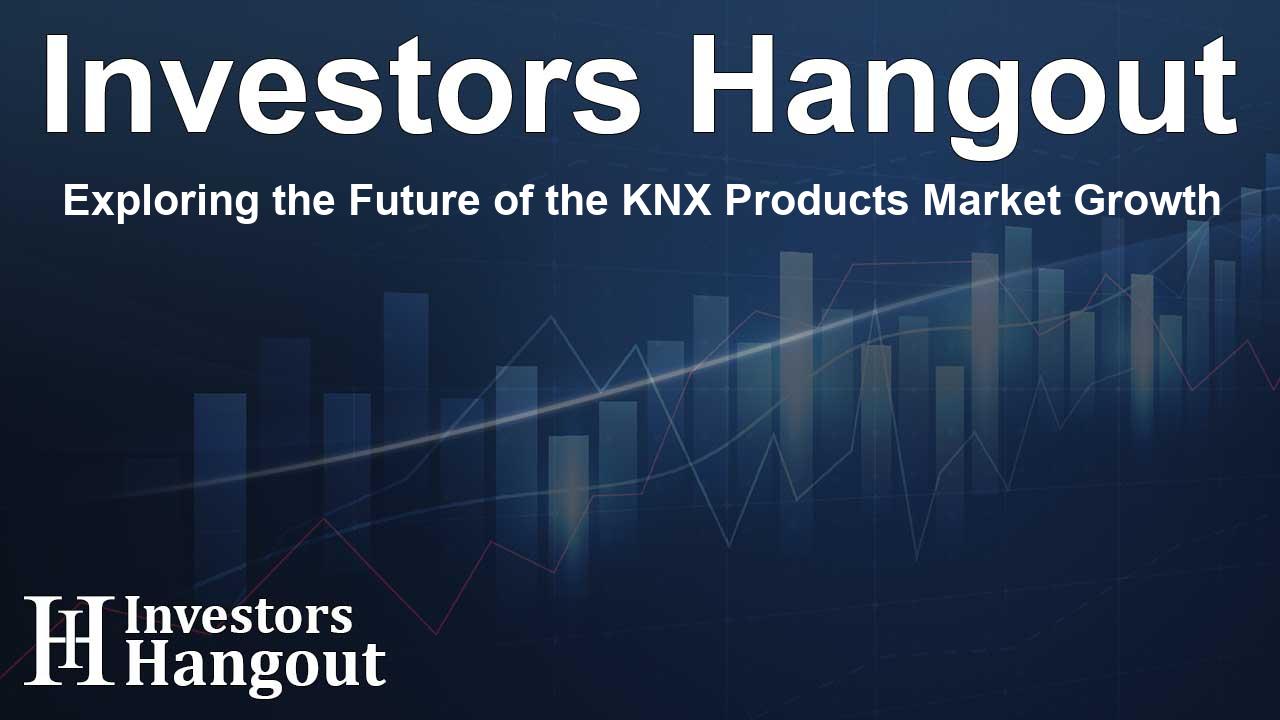Exploring the Future of the KNX Products Market Growth

KNX Products Market Overview and Growth Forecast
The KNX Products market is on the brink of a major expansion, with a current valuation of approximately USD 12.79 billion in 2024. This market is projected to surge to USD 29.24 billion by 2032, marking an impressive compound annual growth rate (CAGR) of 10.94% during the forecast period from 2025 to 2032. This rapid growth is primarily attributed to the rising demand for energy-efficient building automation systems that seamlessly integrate various functions.
Driving Forces Behind Market Growth
One of the key factors contributing to the robust growth in the KNX Products market is the increasing global emphasis on energy efficiency and sustainability. As urbanization accelerates, there is a heightened need for modern, interoperable building automation solutions across residential, commercial, and public sectors.
The rise in energy costs coupled with a shift towards sustainability has propelled significant investments into smart infrastructure. The KNX protocol allows for the control of essential building functions including lighting, heating, ventilation, and security systems, making it a preferred standard worldwide. By mid-2025, over 8,000 devices from more than 500 certified manufacturers will represent a testament to the global trust in this standardized ecosystem.
Market Segmentation
The KNX Products market can be segmented across various lines:
By Product Type
Sensors have emerged as a leading product category, accounting for 26.4% of the market share in 2024. These devices play a crucial role in detecting motion, light, temperature, and occupancy. The growing need for energy savings is driving the adoption of smart sensor technologies that seamlessly integrate into existing systems.
Actuators have also gained momentum, showcasing the highest growth rate in the forecast period from 2025 to 2032. This segment caters to the growing demand for scalable automation solutions, particularly in lighting and HVAC control.
By Application
The applications of KNX products are numerous. Lighting control systems dominated the market in 2024, representing 34.5% of the overall demand. These systems enable efficient energy usage through automatic dimming and energy consumption monitoring. Additionally, energy management applications are expected to record the highest growth rate until 2032 as government initiatives and sustainability goals promote the use of energy performance monitoring tools.
Installation Trends
Regarding installation types, new installations made up 61.1% of the KNX product market in 2024, reflecting the increasing construction of smart homes and facilities capable of integrating various management systems. Moreover, the retrofitting market is poised for exceptional growth as more existing buildings seek upgrades to meet modern energy and automation standards.
The Role of Regulatory Standards and Smart City Initiatives
Government regulations and ambitious smart city projects are increasingly driving the adoption of KNX solutions globally. Policies such as EU energy efficiency guidelines necessitate greater automation capabilities within buildings, thus enhancing versatility for future technology upgrades.
Increased investments in smart city initiatives throughout Asia Pacific emphasize the importance of KNX for managing building controls centralized for improved operational performance. As urbanization continues to escalate, the push for digital infrastructure, combined with the understanding of the long-term cost efficiencies that automation can provide, solidifies the demand for KNX-compatible solutions.
Recent Innovations in the KNX Space
Recent developments within the KNX Products market include advancements such as ABB’s latest KNX-based Blind/Roller Shutter Actuators. This innovative product provides enhanced security and energy savings, optimizing natural light control and improving indoor climate conditions for diverse building types. Such innovations are crucial for meeting the increasing market demand for smart infrastructure.
Key Players in the KNX Products Market
Several key players stand at the forefront of the KNX Products market, including:
- ABB
- Siemens AG
- Schneider Electric
- Legrand
- Hager Group
- Jung
- Gira
- Theben AG
- Busch-Jaeger
- Berker
- Zennio
- MDT Technologies
- HDL Automation
- Eelectron
- Somfy
- Albrecht Jung GmbH
- Weinzierl Engineering
- Steinel GmbH
- BEG (Brück Electronic GmbH)
- Tapko Technologies
Frequently Asked Questions
What is the expected growth rate of the KNX Products market?
The KNX Products market is projected to grow at a CAGR of 10.94% from 2025 to 2032.
What are the key applications of KNX products?
The main applications include lighting control, HVAC control, energy management, security access control, and shutter/blind control.
Which segment is leading in the market?
Sensors are a leading segment in the KNX Products market, accounting for 26.4% in 2024.
How does KNX support sustainable building practices?
KNX solutions promote energy efficiency and enable integration of renewable energy sources, supporting global sustainability targets.
Who are the major competitors in the KNX Products market?
Key competitors include ABB, Siemens AG, Schneider Electric, and other leading technology providers.
About The Author
Contact Lucas Young privately here. Or send an email with ATTN: Lucas Young as the subject to contact@investorshangout.com.
About Investors Hangout
Investors Hangout is a leading online stock forum for financial discussion and learning, offering a wide range of free tools and resources. It draws in traders of all levels, who exchange market knowledge, investigate trading tactics, and keep an eye on industry developments in real time. Featuring financial articles, stock message boards, quotes, charts, company profiles, and live news updates. Through cooperative learning and a wealth of informational resources, it helps users from novices creating their first portfolios to experts honing their techniques. Join Investors Hangout today: https://investorshangout.com/
The content of this article is based on factual, publicly available information and does not represent legal, financial, or investment advice. Investors Hangout does not offer financial advice, and the author is not a licensed financial advisor. Consult a qualified advisor before making any financial or investment decisions based on this article. This article should not be considered advice to purchase, sell, or hold any securities or other investments. If any of the material provided here is inaccurate, please contact us for corrections.
